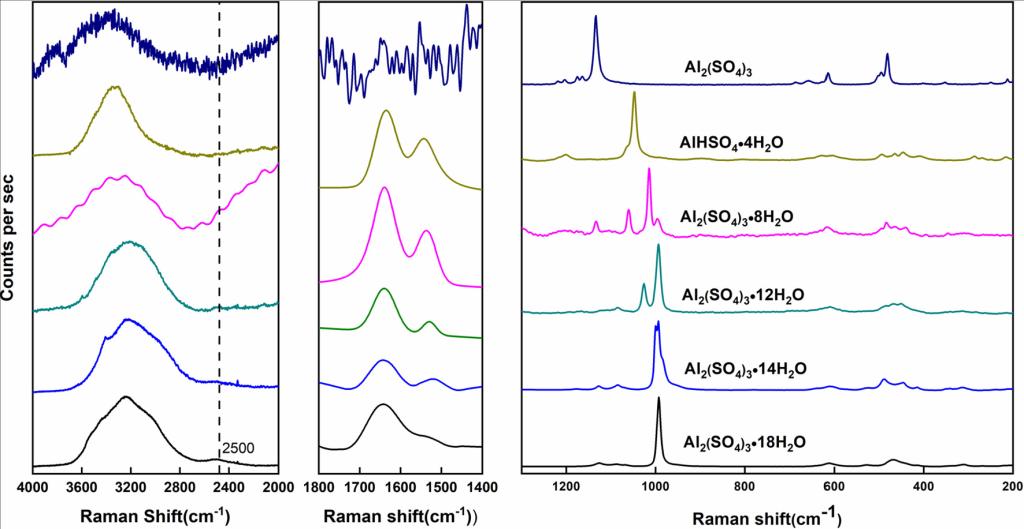Orbital remote sensing has recently identified alunite as one of the types of Al-sulfate on Mars. As other types of hydrated Al-sulfates may also exist abundantly in the soil and rocks on Mars, it is important to perform systematic experimental investigations of the spectral characterization of hydrous Al-sulfates to identify and determine their potential distribution on Mars. We successfully used the humidity buffer technique to synthesize five alunogen series of Al-sulfates, Al2(SO4)3·xH2O (x = 0, 4, 8, 12, 14) and AlH(SO4)2·4H2O, with different degrees of hydration. X-ray diffraction (XRD) was used to identify them from the PDF 2004 database, except for the specie with 12 structural water molecules; the quantity of structural water in the latter was confirmed by thermogravimetry and differential scanning calorimetry measurements after heating to >500 °C. Raman, mid-infrared (MIR), and visible and near-infrared (VNIR) spectra were acquired to evaluate vibrational spectroscopic properties related to crystal structure. The prominent ν1 modes of SO4 tetrahedra of six Al-sulfates from Raman and MIR spectra have obvious shifts to higher wavenumbers (from 993.4 to 1133.6 cm−1) with decrease in hydration states. With no absorption bands from 250 to 1000 nm, all absorption features of the VNIR spectra of alunogen series of Al-sulfates are derived from overtones and combinations of fundamental vibrational modes from OH/H2O and SO4 groups, generally showing a red shift toward longer wavelengths with increasing hydration states. The XRD, Raman, MIR, and VNIR spectroscopic data of these Al-sulfates can provide crucial data supporting their identification for future remote sensing and in-situ detection on Mars.
Link:https://doi.org/10.1016/j.icarus.2019.05.039

